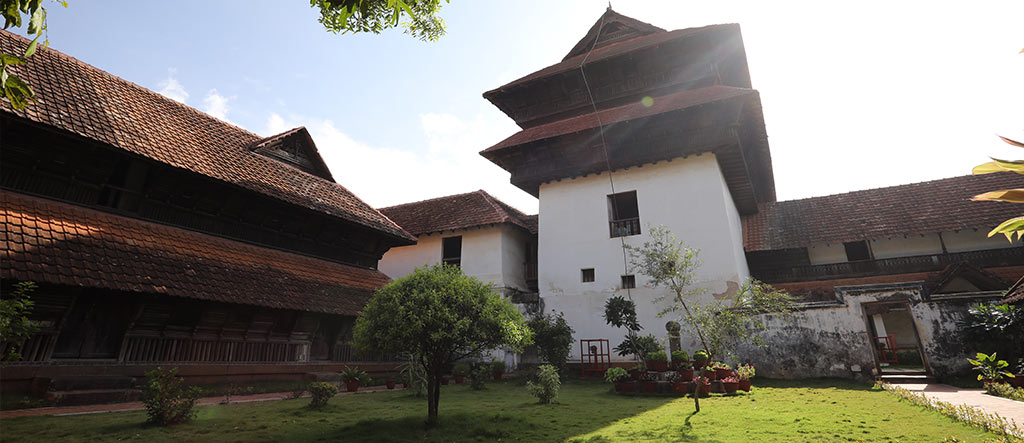Uppirikka Malika

Uppirikka Malika, a grand multi storied structure that symbolises wealth, royal power and the realisation of God is perhaps the most revered structure in the complex. Uparika Malika is located to the northwest of Thai Kottaram. The name ‘uparika’ is derived from the Hindustani word ‘upari’ meaning multi-storeyed. Said to have been constructed in 1745 A.D., under the instructions of Anizham Tirunal Marthanda Varma, Uparika Malika (known as Perumal Kottaram in old records) stands apart from other structures with its unique pagoda-style roof and thick walls.
The ground floor of the structure housed the royal treasury; above it was the king’s bedroom. The second floor was used as a hall for meditation and religious fasting, whereas the third floor was dedicated as the abode of Lord Padmanabha himself, the tutelary deity of the Travancore royals. Thus, Uparika Malika is a curious combination of wealth, royal power, duty, and realisation of God, all combined in a single edifice.
The treasury in Uparika Malika finds mention in an important episode in Travancore history. The revolt against the British instigated by Velu Thampi, the Dalawa eventually led the British forces to capture Padmanabhapuram. In 1809, following the capture of Padmanabhapuram and Udayagiri forts by Col. Welsh, the British force proceeded to loot the royal treasury. However, Velu Thampi and his men had already moved the valuables from the royal treasury. Welsh records that the cash chests in the treasury strong room were already open and a single rupee and two jewels were intentionally left on the ground to infuriate the marauding western soldiers!
Three ornately carved sapramancha kattil, grand poster beds, are seen in the bedrooms. The bed in the king’s chamber is supposedly made from a combination of 64 timber samples with medicinal properties. A close scrutiny of the head and foot boards will reveal European and Indian mythological features carved on it. These curious samples of Indo-Western furniture are said to have been presented to Anizham Tirunal Marthanda Varma either by the Dutch or the Portuguese. The timber beams in the ceiling of this room are also embellished with floral motifs so as to emphasise the importance attached to the space. The window from the king’s bed chamber frames an opening to a small open yard lying to the east of the Uparika Malika. It is said that in olden days the men who were to be recruited as soldiers assembled for vigorous exercises and physical tests in this yard. The choice of selection was vested in the king, who could get a good view of the activities in the yard from his bed chamber.
A narrow stair from this room leads to the topmost floor, the abode of the Lord himself, the walls of which are decorated with beautiful murals. Unlike the rest of the floors, a corridor with graceful serpentine brackets supporting the projecting eaves is seen here on all four sides.
J. H. Cousins, the Art Curator to Travancore Government, has written that an eminent art historian and researcher from America, on seeing these murals exclaimed: “This is the most precious thing in your State! This is your Ajanta!” It is worthwhile to note that these murals on traditional religious topics have attracted several art connoisseurs and researchers to Padmanabhapuram. In 1936, Amrita Sher-Gil, the eminent Hungarian-Indian painter visited the palace and studied the murals.
This part of the building was carefully preserved by the Travancore royals as a prayer room and the ceremonial sword, a mark of royal authority, taken out during special occasions is housed here before a kedavilakku (an eternal lamp). An ornately carved poster bed, believed to be the holy cot where Sree Padmanabhaswamy reclines, is also housed in this room. Considering its prime historic, religious and artistic significance, the entry of visitors to this room is restricted.
Photos

















_04092018173131.jpg)






